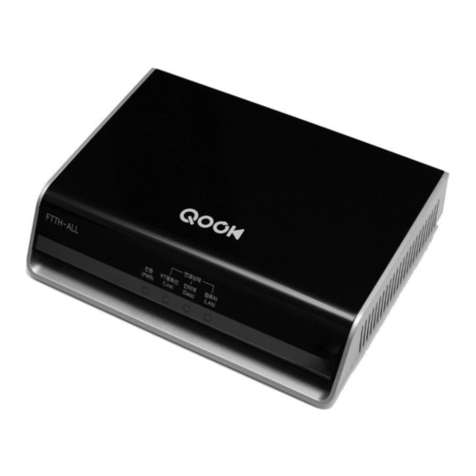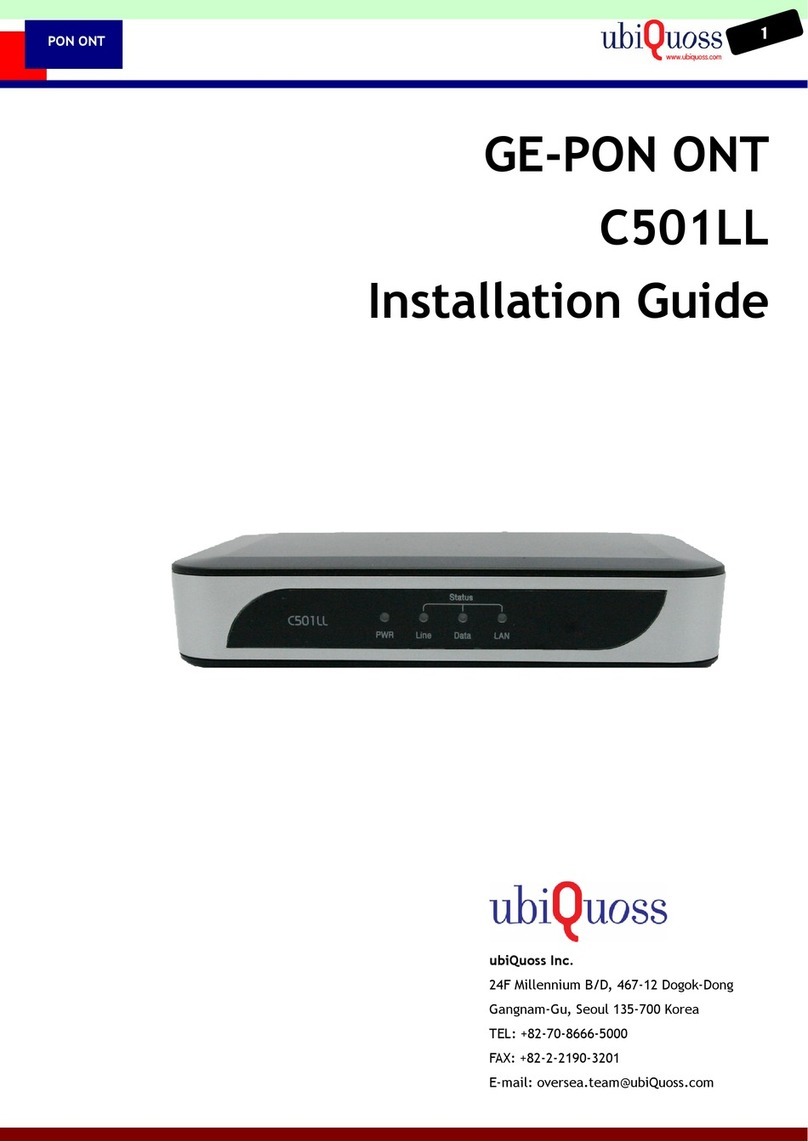
2
PON ONT
Overview
chnology for
45) ports, 2 FXS (RJ
2.11 b/g/n) interface to the subscriber. It is connected to
GE-PON OLT (Optical Line Terminal) and RN (Remote Node) via a fiber optic cable
C524W is connected to the IP terminal devices such as a subscriber’s home-
ides internet service,
subscriber.
f 1.25Gbps with one optic
s the state-of-the-art E-PON
524W supports various
functions, superior to those of the existing Ethernet switch, including QoS
(Quality of Service) function, management function that enables prompt actions
system and a subscriber line, security
ation safely, and subscriber management
crackers.
Key Features
2 FXS Telephone Line(RJ-11) Interface for VoIP service
Supports WEP 64-bit / 128-bit Security password authentication and WPA, WPA2.
Powerful internet sharing function
Supports IEEE 802.1q VLAN Configuration function.
4 Ethernet LAN ports supported 10/100Mbps and one 1.25G EPON port for WAN
Supports ProDHCP function (Server/Client).
Supports specific application, virtual server, DMZ, Access Control and Firewall.
The management program based on WEB and GUI
Remote system management via Internet and software upgrade
The C524W is an ONT (Optical Network Terminal) based on EPON te
home and small office. It supports 4 Fast Ethernet (UTP, RJ
11) ports, and Wi-Fi (80
to provide internet and voice service.
gateway, PC, laptops, smart phones or VoIP phone. It prov
VoIP, and Wi-Fi service at the speed of up to 300 Mbps per
C524W allows up to 32 subscribers to share the data o
cable via passive optical distribution device. It adopt
technology.
By adopting the state-of-the-art E-PON technology, C
to be taken against the problems in the
function that secures subscriber inform
function that secures user information from illegal users such as
Supports IEEE 802.11b/g/n standard.






























